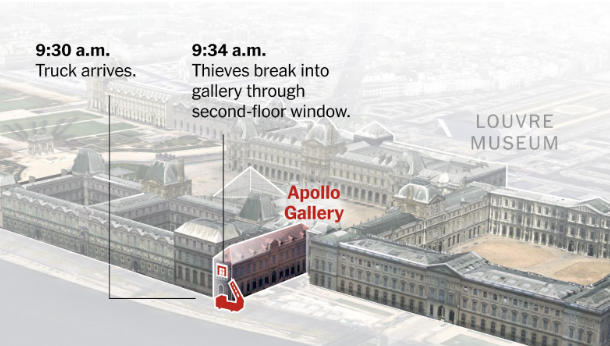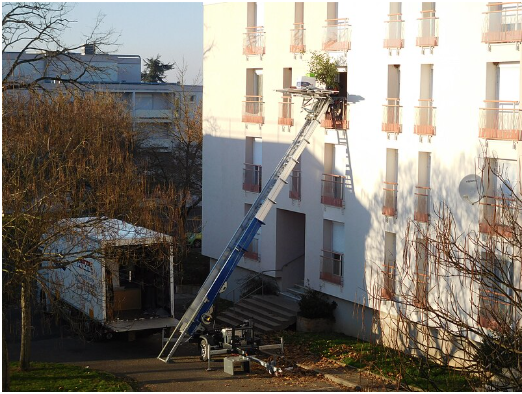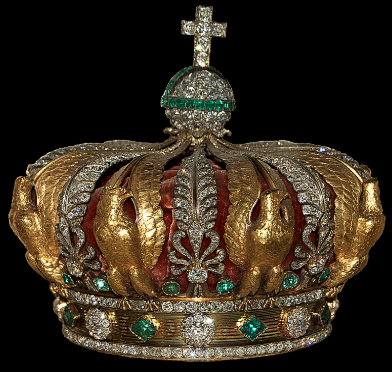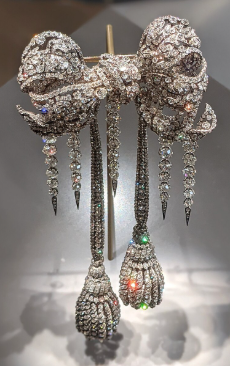Anyone who has been on the internet in recent days likely recognizes the Louvre heist as a cartoonishly effective jewelry heist that took place in the Apollo Gallery of the Louvre in Paris, France, on Sunday, the 19th of October. But how did the heist take place and what was stolen? And, more importantly, what has Paris law enforcement done so far to recover the stolen jewels, and can they be recovered at all? Here are the facts of the case:
The heist
About 9:30 am local time on Sunday the 19th, a group of thieves disguised as construction workers broke into the Galerie d’Apollon (Apollo Gallery) of the Louvre museum by reaching a window on the Seine side with a construction lift. They entered the gallery, smashed the glass containing items belonging to the French crown jewels and imperial jewelry and took nine pieces, one of which has since been recovered. They escaped back out through the window and reportedly left the crime scene on scooters or motorbikes. The whole heist took between 4-7 minutes – the operation has been described as well-planned and professional.
The jewels
The jewels include:
- Pearl tiara belonging to Empress Eugenie (wife of Napoleon iii)
- Brooch (from the same set)
- Tiara belonging to Queen Marie-Amelie and Queen Hortense
- Sapphire necklace (from the same set)
- Single sapphire earring (from the same set)
- Emerald necklace belonging to Empress Marie Louise
- Pair of emerald earrings (from the same set)
- The “reliquary” brooch
A ninth item, a crown belonging to Empress Eugenie, was recovered by the window. It was a major piece, containing over a thousand diamonds and over fifty emeralds.
All the jewels belonged to the 19th century.
Their value is estimated by the Paris prosecutor to be around $102 mil.
Significance
The ease at which this heist was committed brings into question the security at the Louvre and other museums. Additionally, the heist may inspire similar attempts at different museums, raising questions about how governments and museums have a responsibility to adequately protect priceless pieces of cultural heritage. In fact, the French prosecutor has stated that the historical and cultural loss of the pieces is far greater than the monetary one.
Unfortunately, it is unlikely that all the pieces will be recovered in good shape, if at all. Stolen jewelry is often dismantled; gemstones re-cut, and precious metal melted to make it easier to sell on the black market.
Investigation
According to authorities, about a hundred investigators are currently working on the case. Their evidence includes security footage, forensic evidence (including tools left behind by the thieves), and witness testimony. Details will likely not be publicly revealed soon to protect the investigation. So far, aside from the crown left behind under the window, none of the pieces have been found and the perpetrators have yet to be identified and brought to justice.












